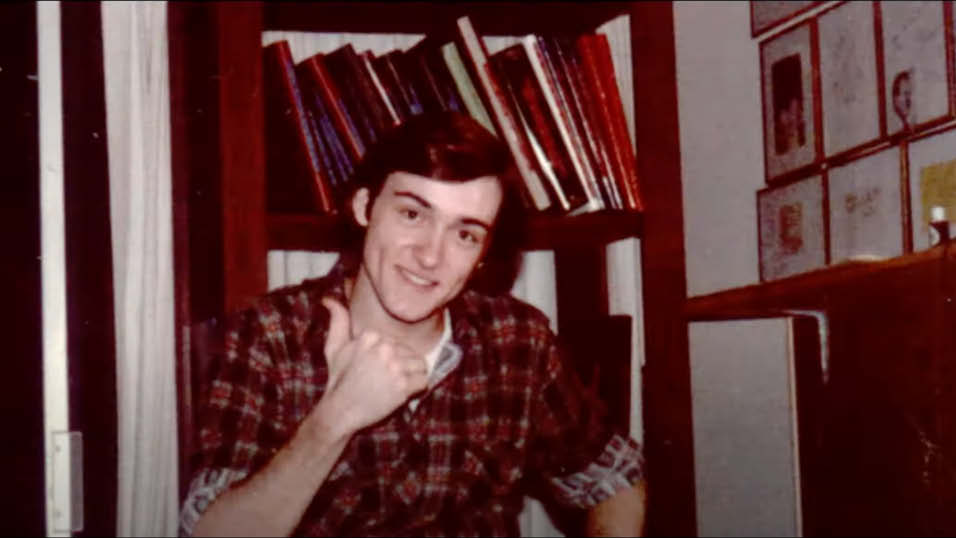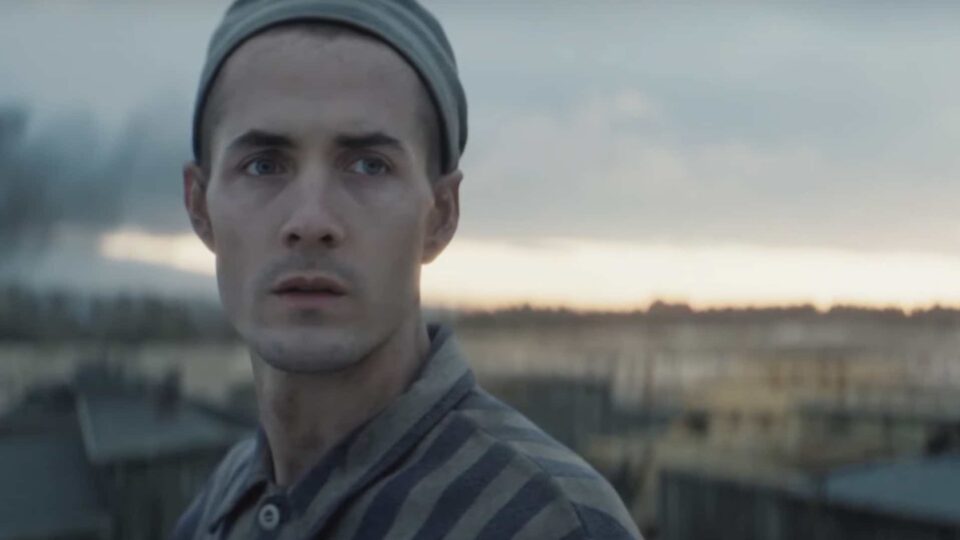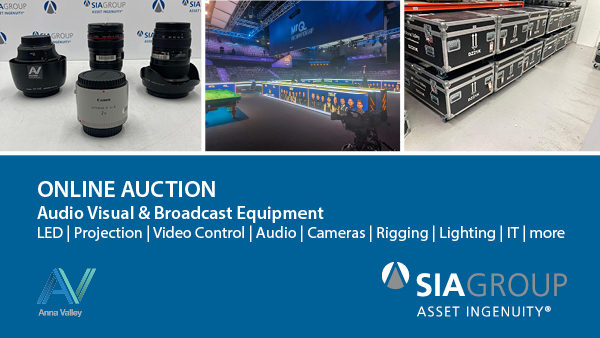Rambert’s hit stage show Peaky Blinders: The Redemption of Thomas Shelby was captured for TV by North South Productions and will air on BBC4 on New Year’s Day. Televisual goes behind the scenes to find out more about how live show was captured for TV, keeping the energy of the dance and the hallmarks of the Birmingham gangster TV series.
The connection between ballet and Peaky Blinders might not seem immediate. But there’s a shared timeline: the show is set in 1920s and ‘30s Birmingham; the Rambert dance company was performing in Birmingham and surrounding areas at that time. And it wasn’t just the wealthy elite in the audience.
The evolution of a stage version of the TV series began around five years ago, championed by Rambert chief executive Helen Shute. After getting Peaky’s creator Steven Knight on board with the idea, Rambert’s artistic director Benoit Swan Pouffer developed a take on the iconic Peaky characters.
Inspired, Knight wrote a scene in series 5 where the show’s main protagonist, Thomas Shelby, known as Tommy, stages Swan Lake at his lavish house, performed by the Rambert. “Between the music, the dance and what Peaky is became apparent to me then,” said Knight. “It was a freezing cold night and people were dancing in very little, but there was something magical about it.”
For the stage show, Knight created a love story which comes out of a prequel to the TV series, where the action starts in the trenches of the First World War. There are the same characters, but there are also extensive scenes in the stage show which go into Tommy’s mind and his madness.
Knight made the introductions to Peaky Blinders production company Mandabach. “They became instrumental as the idea began to take shape,” says Helen Shute, “ensuring the stage show was intertwined with the Peaky Blinders brand.”
Birmingham Hippodrome and Rambert’s long term partner Manchester’s performing arts organisation The Lowry signed up to co-produce.
The stage show launched in late 2022 at the Birmingham Hippodrome. So far, 100,000 have seen it.
When Rambert began to explore making a film of the show, the BBC was the obvious screen partner. There was also funding from cultural support organisation The Space who were at the time creating a Birmingham Box Set. And support from the UK cinema tax credit allowance.
The BBC Arts team and commissioning editor Stephen James Yeoman introduced Rambert to production company North South which specialises in capturing live performance.
“Benoit originally explored turning the show into an on-location feature film,” says North South co-creative director Sarah Butcher. “We knew any stage capture would have to meet that cinematic vision. We met, and our vision for the stage capture aligned straight away.”
“One of the goals of Rambert is to really open the gates, widen access to and democratise dance,” says Benoit. “I was always hoping that we could create a new experience for the audience. To film it is a really great way to initiate the fans, of the series, as well as new audiences.”
“I was clear of how it should feel,” says Benoit. “You get to immerse the audience, the viewers, in a way that’s different from how they would have seen the show on stage.” New angles included overhead shots. “When you do a live show, you’re hoping that they will see what you want them to see. We took the opportunity to show it in the way we want it to be seen.”
“We bring the best of film language to the work, retelling and translating that story from stage to screen,” says Butcher. “We talk about it as a translation, because it’s about moving from one language to another.”
North South kept the production grounded in the language of TV. “We were keen to make sure the types of shots we chose felt familiar to screen audiences,” says Butcher. “That meant taking the camera much closer than you might traditionally in a stage capture and playing on action and reaction just as you would in TV and film.”
North South co-creative director Matt Hargraves adds: “In the theatre, you’re constantly on a wide shot, whereas we were able to work through the narrative by choosing what shots we needed to tell that story.
“We were able to be playful, being that close, like when Tommy gives a wink down the camera. Interacting with the screen audience really helped bring that sort of gritty, self-assured Peaky Blinders-ness that we know from the TV show performances.”
The combined stage and TV team ran to around 60 people. For the stage production, Roman GianArthur was the composer and music supervisor. The performance uses iconic Peaky Blinders’ tracks from Nick Cave and The Bad Seeds, Radiohead, Anna Calvi, The Last Shadow Puppets, Frank Carter & The Rattlesnakes and Black Rebel Motorcycle Club. The late Benjamin Zephaniah lends his voice to tell the story.
Natasha Chivers was the stage show’s lighting designer, and Richard Gellar the costume designer. Set designer Moi Tran included a trench around the main stage which, Benoit says, “should be a choreographer’s worst nightmare, but actually it gave me so much to play with.” The trench was an additional challenge for the TV capture.
The show carries through the anachronistic approach that is a feature of the TV series.” We are talking about a certain era and yet the music is very contemporary, the way it is shot, the colours, the treatment is very contemporary. So yes, I did consciously focus on that.” Says Benoit. “For the live show, we have a rock band on stage – and I was led by the music. It is very important – Peaky Blinders would be a different TV show without its soundtrack, so it was very important for me to honour that and ensure this component was there.”
“What Benoit had created lent itself so well straight away,” says Hargraves. “So when we were working through the creative we were able to find a way to take the camera through the narrative of the show fairly decisively.
“We didn’t want to match it, but wanted the film’s style to fit in the Peaky Blinders world. The way the film visually looks, in terms of the grade, was from looking at the TV series.”
North South began on the project in February 2023, filming the production in May and delivering it in September. Pre-production included a day and half of working through an archive recording of the show with Benoit, developing the camera approach and script.
Part of the plan to immerse the audience was to treat the camera as a performer. “The camera had to be choreographed among the other bodies,” says Benoit. “That’s where we were pushing a bit at the boundaries as far as trying to immerse the audience, the viewer, as if they are literally on stage. The viewer is on stage.”
“We had a session with the dancers in the rehearsal room at Rambert where we brought the Steadicam Operators in to do a bit of a feasibility study” says Butcher. “We were very quickly able to merge the camera team with the dancers in order for us to know that the dancers are able to respond to camera and the camera in the same way to the dancers.”
The performance was shot across three days at the Birmingham Hippodrome. The first two days were shot ‘as live’ with the TV crew using a technocrane, an Agito running across the stage and two handheld operators shooting form the corners. “We couldn’t have achieved that camera set up with an audience as their view would have been completely obstructed,” explains Butcher.
“Our process was to take the camera script, work closely with Stage Management to flag anything that might be a health and safety issue around pyrotechnics, props or the way that the dancers were moving, walk through it with the dancers, Steadicam Operators (Benjamin Eeley and Justin Theodore) and grips, then shoot.”
“Running the show twice on the first day was our chance to get our wide and our mid shots from a technical point of view,” adds Hargraves. “It allowed us to get our base to work from. Between the matinee and evening show, we actually varied the camera positions to give us more options in the edit. Then day two and three was essentially was our beautiful close up onstage work.”
They used the Alexa Mini and Mini LF, paired with Angenieux Cine zooms, “to give it a more cinematic look as opposed to broadcast,” says Hargraves.
“When we look on Netflix and Amazon, we see all these beautifully shot and graded films and TV shows. We want stage capture to be able to compete….The crew and post production teams we choose to work with are top of their game from the film and TV drama world.
“Performance capture can be quite flat. We thought a lot about the look of the final image, shaping the lighting design that was set for the show and embracing the atmosphere that Benoit had created. To help soften the theatre lighting we used Pro-mist filtration. This also helped take off the digital edge from the camera. In the grade we added halation and 35mm film grain – all in order to give us a more cinematic feel to the final film.
Aware of the care needed with the sound design, the post took six weeks, three for the cut and three for sound and grade, simultaneously, before the final mix. “Once we’d locked picture we did an ADR session with the dancers because some of the really close-up shots show a lot of powerful emotion,” says Butcher. “We felt you needed to hear that emotion in the sound mix, which means you’ll hear something slightly different on screen than you would have done if you were in the auditorium.”
Peaky Blinders: The Redemption of Thomas Shelby airs on BBC4 on New Year’s Day at 9.25pm. It will also be screened in selected UK cinemas in 2024, and international viewers can watch on Rambert Plus .



Pippa Considine
Share this story


















